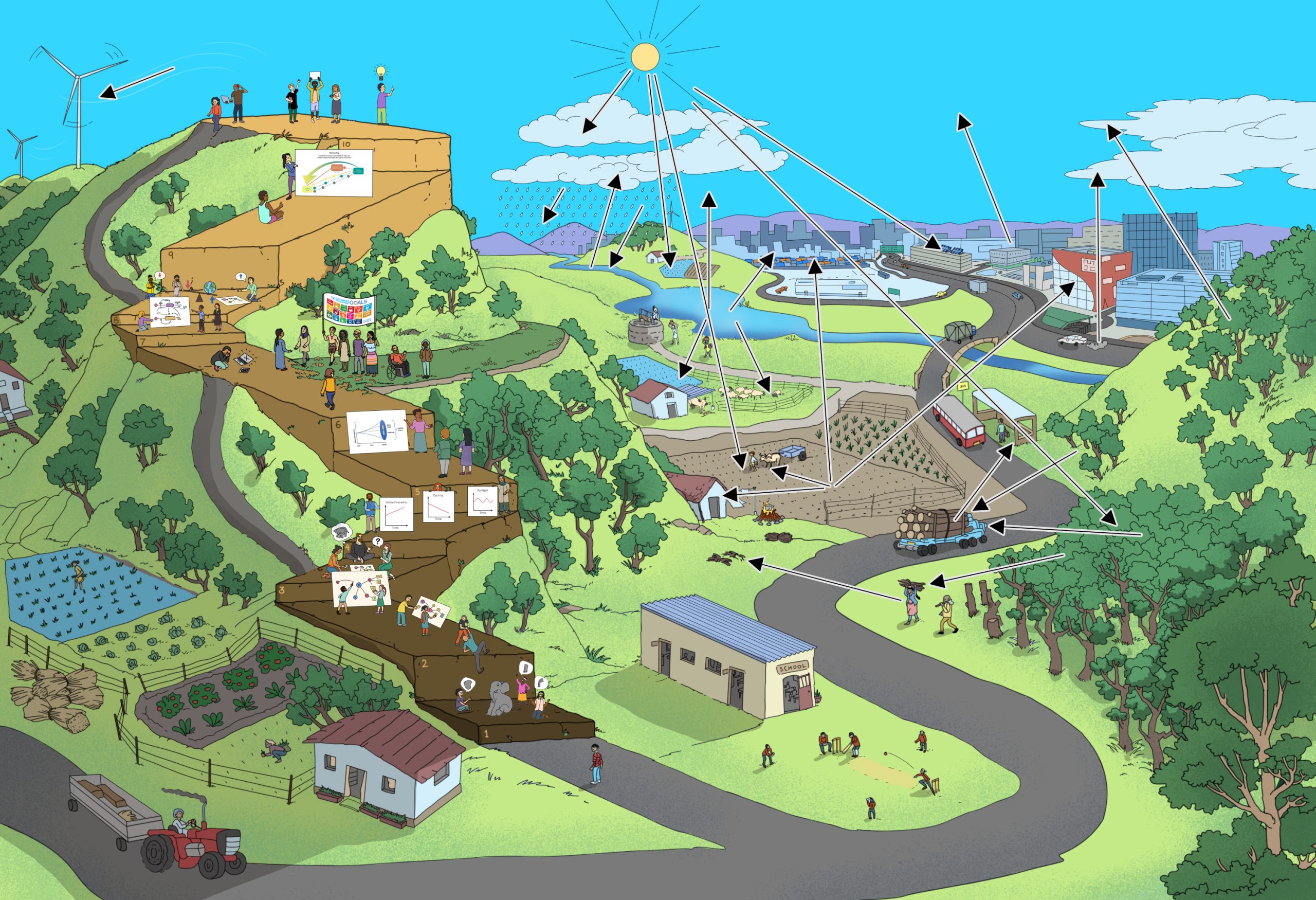Systems thinking is the ability to describe and/ or visualise a part of a complex reality , express that part of reality as a model, understand the model as a system, use the model to explain the behaviour of the system, anticipate the behaviour of the system, and evaluate its impacts on sustainable development, identify potential points of, and types of interventions, generate options to act, assess their impacts in the frame of sustainable development, and decide whether further actions are necessary or not.
- What is the aim?
To enable learners to:
- Understand what a leverage point is in the context of the potato chips system,
- Understand there may be different leverage points with different efficacy within the potato system, and
- Apply the understanding about leverage points to potato chips systems to effect change.
Activities, tasks, and suggested learning methods
Preparatory Activity
Let learners work in groups of four (two from the production line and two from the nutrition line).
In this Step, they use the outputs from earlier activities:
- The outcome from the second part of the activity “We eat potato chips when….”in Step 1
- The concept maps developed in previous steps (or the comprehensive system maps provided in Step 3).
Learners have to merge the two models of the system in one, connecting the production line with the nutrition line.
Here are some leading questions to guide the merger of the two models.
- What is the bridge between the two systems?
- What influences the consumption of chips?
- Is potato chips production and consumption interdependent? If yes, how?
- Why do I want to eat more chips once I opened a package?
- Is consumption related to production?
- List some tangible and intangible factors that link production and consumption. (For example, transport facilities and demand or advertisement).
- What is my (or an individual’s) function in this system?
- How can I influence the production of chips with my decisions and actions?
- How does the consumption of chips affect my own health?
Activity – Leverage points in the potato chips system
- Introduce the idea of a leverage point using the activities suggested in Step 7(e.g., by showing the Niki Lauda video https://youtu.be/lk0xgCpoqR8).
- Ask learners to Identify potential leverage points in potato chips production. For this, a variation of the Jigsawmethod may be used.
- Present to the group the following question:
How does marketing influence my consumption of potato chips?
- Use the groups formed in the preparatory activity.
- Each group should select a topic related to the question and discuss potential leverage points pertinent to the topic. They should prepare notes with their arguments to help them develop their conclusion. There are many factors or topics that they can use. Here are some examples:
- Health
- Cost
- Working conditions
- Marketing
- CO2 emissions (environmental factors)
- Consumption
- Addiction (why do we eat them, flavour, social issue, convenience)
- Each group should nominate two participants who will become spokespersons and will leave the group and join the working group on the left. Their mission is to collect the information of the other working groups
- The two remaining participants in the original working group update the two new members and explain to them which leverage points have been identified in the topic selected. All the doubts should be addressed.
- This should be done until all the participants return to the original working group.
- At the end, each working group will have a holistic perspective of the topic and a set of the different leverage points of the potato chips system and would be able to answer the question.
- Each group should review all the information they gathered, integrate it to their Concept map and write a conclusion.
- Each group should present the changes they made to the concept map and their conclusion in a plenary.
Further leading questions
- How to use points of intervention to achieve intended behaviour of the potato chips system?
- Are there possibilities for different types of intervention?
- Who decides that an intervention should be made, and with what aim?
- Which strategies/ actions will be required to bring a change at a leverage point?
- Who can take such actions/ decisions? If it’s you, do you think you would be able to do it? If it is someone else, can you persuade them to act?
- What kind of intervention must be made at any leverage point?
- Are interventions to be done simultaneously at different leverage points?
Example


